-
Posts
717 -
Joined
-
Last visited
-
Days Won
81
Content Type
Profiles
Forums
Downloads
Gallery
Posts posted by LogMAN
-
-
44 minutes ago, Michael Aivaliotis said:
Which notification? Do you mean the "Something went wrong" message? So I think you are mentioning 2 issues. One is the message and the other is the incomplete profile step.
Sorry, my bad. I didn't see the "Something went wrong" message, thought we were talking about the "Optional Profile Information".
-
This is awesome! Thanks Michael
 42 minutes ago, Michael Aivaliotis said:
42 minutes ago, Michael Aivaliotis said:How do you login? Using built-in login or facebook? I'm thinking it's a caching issue maybe.
I see the same notification using regular login (email + pw). Caching doesn't seem to be the issue. There are likely some new parameters which weren't available in the previous version.
Edit: Here is a capture of the requested settings (it says "optional" but if you click "Skip this step" it will continue requesting info):

Update: Pressing "Dismiss" on the notification seems to work for me

-
7 hours ago, smithd said:
I wasn't able to find any example of code which offloads all the password handling to windows
Are you looking for something like this?
-
Here is a KB from NI on this subject: https://knowledge.ni.com/KnowledgeArticleDetails?id=kA00Z000000P7qjSAC
-
 1
1
-
-
Which font do you use? On Windows we have "Small Fonts" which is the only readable one. Something similar should exist on Linux.
-
If anyone is interested in finding incorrectly connected Constructors automatically, here is a VI that will do that for you:
It's not very fast, but it does its job. The result is a list of VIs with the total number of Constructor Nodes found and the number of Constructor Nodes where the first terminal ("new reference") isn't connected. This is an indirect solution because the offending terminal officially doesn't exist (not accessible via scripting).
-
 1
1
-
-
Thanks for reporting @_Mike_
Turns out the terminal adjusts to the object type (object or enum). In your case the Constructor is for an enum type, so it actually returns an enum instead of a reference. Here is another example:
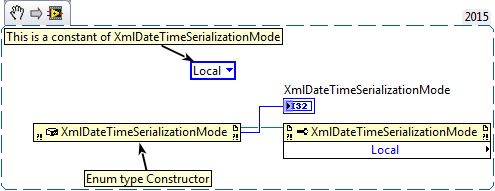
This is the corresponding definition according to Visual Studio:
Very interesting behavior indeed.
-
 1
1
-
-
@Darren Would you be interested in adding another detail to the CAR?
Just for fun I went to see if I can break other nodes and actually got strange behavior from the Call Library Function Node in a very similar way (using LV2017). You can connect the "path" terminals, even if the option "Specify path on diagram" is not checked. I understand that this is probably a design choice to prevent wires from vanishing when unchecking this option and it doesn't do any harm, but the wire should break. Unfortunately, the output wire doesn't break initially:
Notice: I just placed the node and connected the wires. The options dialog is open to show the checkbox is actually not checked.
Here is what I get after pressing the "OK" button on the dialog (you don't have to change any settings for this to work). You can see the wire is now broken, as it should be:
This is only a cosmetic problem because the function breaks as soon as you press the "OK" button. The behavior is strange nonetheless.
-
Thanks everyone! It's good to know I'm not (yet) going insane

Sorry for not mentioning how reproduce the issue in the first place. I suppose one reason this never occurs to anyone is because we all start wiring from the Constructor Node for obvious reasons, except sometimes we don't.
3 hours ago, Darren said:I have filed CAR 711518 on this issue. I agree that it is a significant usability concern that it is so easy to wire to that null reference terminal, have code that doesn't function correctly, and not have an indication as to why.
Awesome, thanks for sharing!
I'll inform my team to keep this in mind.
-
Okay, I just finished testing on various machines (virtual an non-virtual) with various LV versions and all of them support this feature! It is very unlikely that we somehow broke all machines and versions in our department for the past 15 years exactly the same way (although there is always a chance
 ). Find attached more snippets for all versions I checked (for 7.1 and 8.6.1 I had to take screenshots). I've also attached the VI for LV2017. So, in total I've positively tested these versions:
). Find attached more snippets for all versions I checked (for 7.1 and 8.6.1 I had to take screenshots). I've also attached the VI for LV2017. So, in total I've positively tested these versions:
- 7.1
- 8.6.1
- 2009
- 2011
- 2013
- 2015
- 2017
Unfortunately I currently don't have a 2018 Installation to check.
34 minutes ago, JKSH said:What happens if you load the project in a different dev machine?
It works just fine. We can load, edit, build and execute the project and all executables.
15 hours ago, Darren said:Also, I got a DWarn when I copied your snippet into my diagram
Darren, which version of LV have you been using at that time? Could this possibly have been changed in LV2018?
-
Thanks for looking into this Darren!
On my machine these terminals are permanently available even after a reboot and with a new VI. I just removed all VIPM packages and cleared the compiled object cache, restarted LV and still can connect those terminals. Also tested this on a different machine and got the same terminals.
14 hours ago, Darren said:Also, I got a DWarn when I copied your snippet into my diagram
This is a very bad sign indeed, I don't see any warning whatsoever. This means it's either a bug in this particular version of LV [15.0.1f10 (32-bit)] or my installation is majorly broken somehow. Not sure what could have caused it though.
14 hours ago, Darren said:So I'd chalk this up to some weird corner case/corruption and move on.
Unfortunately I can't do that. My application builds perfectly fine (no broken arrow, no exception, no error) while connected to the wrong output terminal. This could potentially be harmful if it somehow effects memory. I'll check if this is still an issue with the latest (f12) or one of the previous patches.
-
So this just happened to me and I'm quite confused by it. As it turns out, the .NET Constructor Node not only provides terminals for error in, error out and the reference, but actually two more "hidden" terminals:
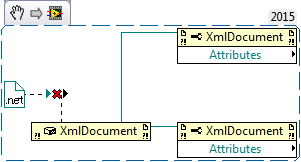
Notice: I left the error terminals untouched and none of the wires are connected (try it yourself). This never occurred to me. Only now, while hunting a null reference exception I found the constructor node looked "off", like this:

The strange part is that the terminal doesn't actually carry the reference (which is why I receive the null exception). It only specifies the type. The upper left terminal is a void type input, so the wire is always broken.
Does anyone know why these extra terminals exist? They don't seem to be part of the specification as far as I can tell.
Any fancy things we can do with this?

-
How about a fade animation for switching between FP and BD?
Or slowly connecting wires with some sparkling effect at its current position?
By 2020 Hollywood will use LV for the next generation of CGI, just wait for it

-
21 hours ago, Neil Pate said:
Anybody else troubled by things like this?
Absolutely. We still use LV2015 for our projects, even though newer version are "superior" in some aspects. Still wondering if there is anyone at NI actually using LV/NXG for real-world applications nowadays. From my perspective, design has become much higher priority in newer versions than responsiveness did in the past. My dev machine is equipped with decent hardware and still LV2017+ and NXG feel slow. The kind of slow where you wait for some freaking animation to finish, not the kind of slow where the code runs slower...

It has gotten to a point where we are frustrated enough to consider moving away from LV, especially for more common tasks that can easily be done in text languages. In the past we implemented those tasks in LV mostly for convenience (only one language to maintain), but maintenance has become more and more tedious and very frustrating in newer versions (don't even get me started on NXG, it's a disaster). I really hope NI takes a hint and allows disabling all the "cute" features in LV and NXG. LV2020 is likely the last version we'll consider for internal testing. Hopefully with positive results or my keyboard will get much more busy than my mouse.
16 hours ago, smithd said:They're trying to ease you into nxg
Says a lot about it, doesn't it

-
On 6/4/2018 at 10:35 AM, shoneill said:
Every time I try to download videos my IP gets banned.....
You might want to reduce the number of parallel connections to two (seems to be working fine on my end). The server bans IPs with too many connections at once:
6 minutes ago, jacobson said:Were the old NIWeek videos moved to another location?
The other videos are still online, but not available right now until traffic for the current videos has gone down. Once all of us finished choking the server all videos should be available again. This has happened in the past as well:
-
 1
1
-
-
1 hour ago, halum said:
look at my work its is correct or no plz
expression: 1) z = (3>>x)+(5<<y)
2) z = (x² ^ 2) | (y & 1)
I understand you are eager to learn programming in LabVIEW, but you should really start by learning the concepts first. The learning curve you try to take is way to high in my opinion. That being said, these are your current solutions as far as I can tell:
1) z = (x << 3) + (5 << y) 2) z = (x² ^ 2) | (y & 1)
Again, you should manually calculate some results and see if your code returns the correct results.
-
 1
1
-
-
31 minutes ago, halum said:
1) z = (3>>x)+(5<<y) what does it mean << and >> its an array? and by any tools can i design it in block diagram
To answer your question: No, its not an array. I think GregSands already provided good help to this particular question:
22 hours ago, GregSands said:Secondly, look at the built-in help to explain the operators. Right click on the Formula Node, then Help, and then look for the allowed operators. You'll see the ones you need, including >> (right shift), << (left shift), & (and), ^ (exclusive or), and | (or). Note that ^ is not "to the power of". That should make completing this fairly straight-forward.
Of course this is only useful if you work with the Formula Node, just like you did with the other solution. That being said, before you continue writing anything in LabVIEW please take your time to understand what your expressions are doing. Try to make it simpler to understand. For example, instead of trying to get this entire expression to work, start with one portion of it, like the first part:
z = 3 >> x
You have to answer the same questions as before: What do you expect this expression to return for z?
There are a lot of resources on the internet that also explain very well what these expressions do. You just need to know what to search for, so here is a translation table for you:
- >> Arithmetic Shift Right
- << Arithmetic Shift Left
- ^ Bit Exclusive Or
- & Bit And
- | Bit Or
I suggest you try and understand what each of these expression does before combining them into longer expressions. Here is a full list of operations with their names for the Formula Node: http://zone.ni.com/reference/en-XX/help/371361P-01/lvhowto/precedence_of_operators_in/
31 minutes ago, halum said:2) z = (x² ^ 2) | (y & 1) when i put the boolean oppeartion and try to connect input and out put variable, message show demande mathscrpt
I'm not an expert with Formula Nodes, but this should be possible to do without MathScript. From what I can tell the "x²" probably isn't allowed in the Formula Node, so maybe use "pow(x,2)" instead? If you get an error message please post the entire message here, maybe someone knows why this error happens.
-
 2
2
-
8 minutes ago, halum said:
I mean i cant design a Virtual instrument for this expression
You did it for the other expression, so which part do you have trouble with? Is there maybe an error message when you create the VI?
-
5 hours ago, halum said:
is my work until now correct?
You are the one who wrote the program, you should know better than anyone if it produces the right results or not. If you don't, maybe you should start by understanding the expression before writing any code. Let's take your first example:
if ((a + b) >= 4) c = (a - 2) + (b * 3) else c = (a + 5) * (b - 2)
What do you expect for a = 2 and b = 3? Your program returns c = 9. Is this correct?
Before writing any code I suggest calculating a few results by hand. That way you can compare your results to what the program returns. This is how you make sure your program works correctly.
Edit:
On 5/7/2018 at 5:56 PM, halum said:but the first and second expression i m really not understand how can i resolve it
Can you explain more detailed where you have trouble? The third expression seems to be working, so what is the problem with the other two?
-
40 minutes ago, 0_o said:
However, the crashes didn't happen during execution and you refer to DWarns and not DAborts.
You mean they didn't happen in the executable right? The executable has no automatic error handling (unless compiled with debugging enabled, maybe), so the errors still happen but silently.
Error 1097 indicates that the library corrupted memory. Memory that doesn't belong to the library, which is a serious issue. I'm not an expert with Call Library nodes, but this should be taken care of. Here is an article that might be of help: https://knowledge.ni.com/KnowledgeArticleDetails?id=kA00Z000000P6tcSAC
@jacobson mentioned before:
19 hours ago, jacobson said:A DWarn is something that LV could recover from and a DAbort is something that LV could not recover from.
A DWarn doesn't mean LV restored the corrupted memory, just that it was able to continue operation despite the memory being corrupted. You should still make sure it doesn't happen again!
42 minutes ago, 0_o said:I have several ways to check for memory issues and already saw that even when I close a reference to a dll using the call library the memory is not freed till the calling vi is closed (BD closed) and that is often the stage when LV crashes.
Sounds to me like the Call Library nodes are not configured properly. The library is unloaded by LV when closing a VI which causes the library to free all of its memory. Since the library accessed memory in the address space of LV, it tries to free it, causing LV to crash in the process.
44 minutes ago, 0_o said:Why should the call library behavior be expected?
I meant that this is to be expected while working on the Call Library node. At least it takes me a while to figure out the correct settings before it works without errors.
-
Some of your crash logs point towards the TSVN Toolkit. Possibly related: https://knowledge.ni.com/KnowledgeArticleDetails?id=kA00Z0000019RInSAM
Edit: OpenCV also causes some issues:
<DEBUG_OUTPUT> 21/02/2018 17:31:12.240 DWarn 0x50CBD7C1: Got corruption with error 1097 calling library OpenCVWrapperToCpp.dll function ?lv_Canny@@YAXHHNNH_NPAH@Z
I suppose you were working with the Call Library function at that moment, so these problems are to be expected. Just make sure to restart LV every now and then to reset the memory or LV will crash eventually.
-
 1
1
-
-
1 hour ago, mje said:
Somehow there's an auto-magical cursor scaling in the image that doesn't appear on screen.
A screenshot consists of two elements: A picture of your block diagram and a separate picture of the mouse cursor at that moment. The software also reads the position of the cursor and puts it back on top of the block diagram, scaling it to the current cursor size (of Windows that is) in the process. This is why it looks bigger in the screenshot that it does on your monitor.
That being said, if NI isn't willing to implement high DPI cursors in LV "classic", maybe there is a way to add or replace the cursors using one of the resource editors.
-
There is actually an idea on the Idea Exchange for this and it was rejected for already been implemented!
1 hour ago, mje said:I'll preemptively say NG isn't an option, there are reasons I'm still working in LabVIEW 2017.
You probably won't like their solution...
-
I have never used these protocols myself, so I can only point directions. Here is a topic that has a solution regarding SOAP: https://forums.ni.com/t5/LabVIEW/SOAP-web-service-possible-to-access-from-LabView/td-p/3198844
It's done for LV 2015, but you can always save for previous version to make it work with any version down to 8.0
Somewhere down that thread is a link to a topic on LavaG, might prove useful as well:
-
 1
1
-



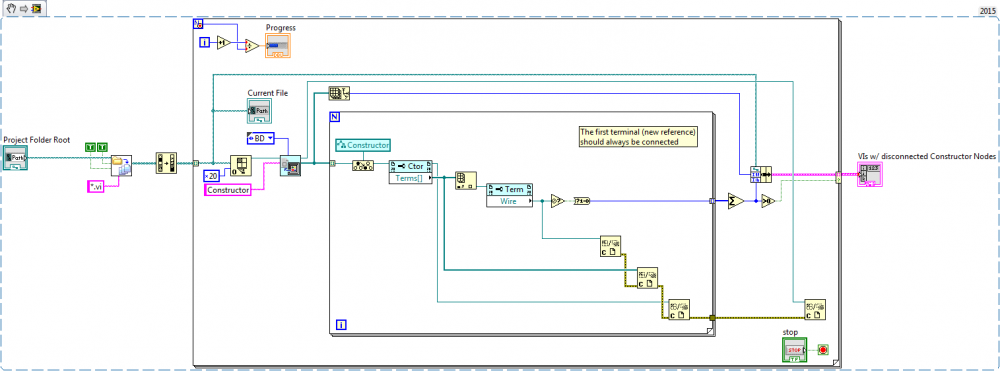

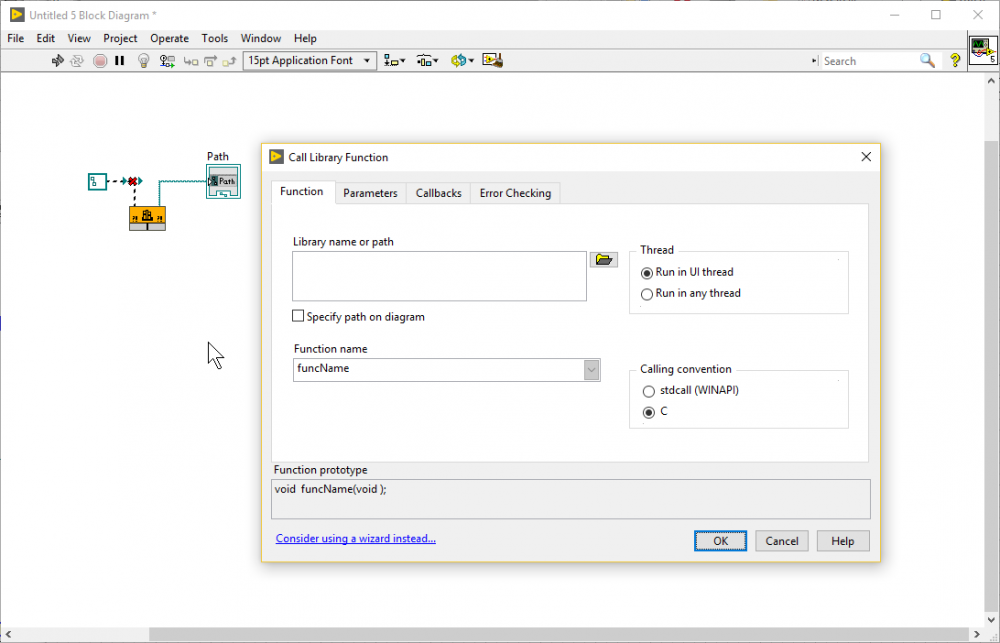
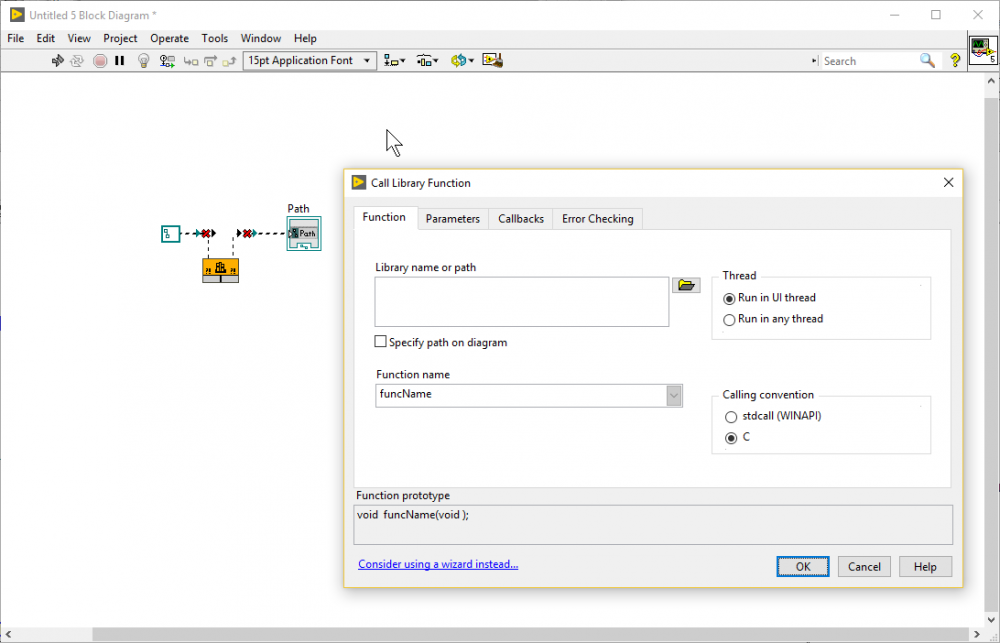
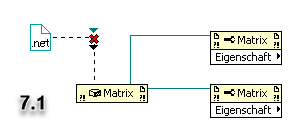
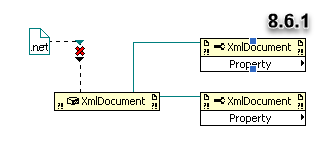
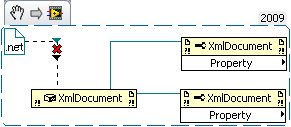
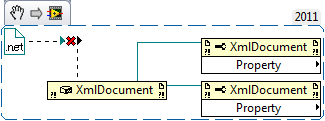
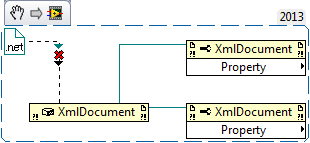
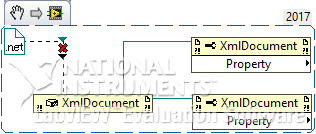
How to delete phantom controls from a TypeDef
in User Interface
Posted
Yes, at least since 7.1, maybe earlier.